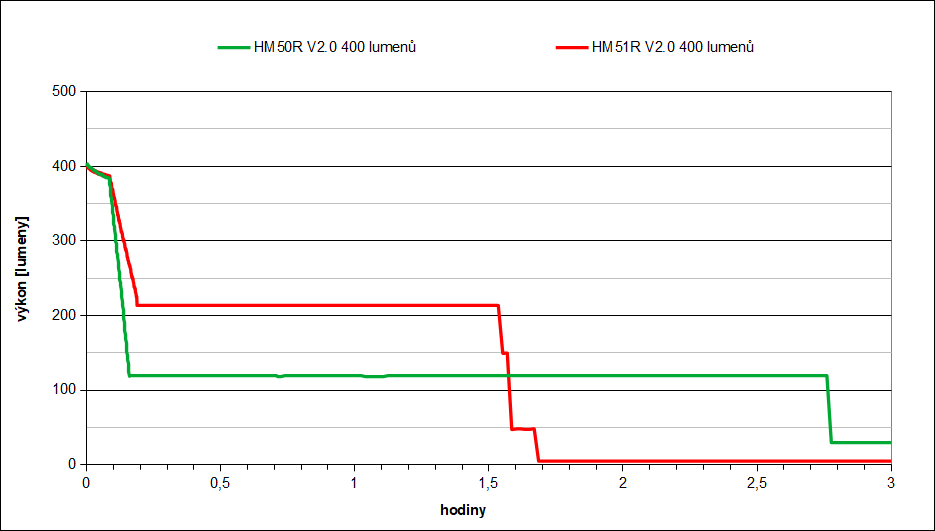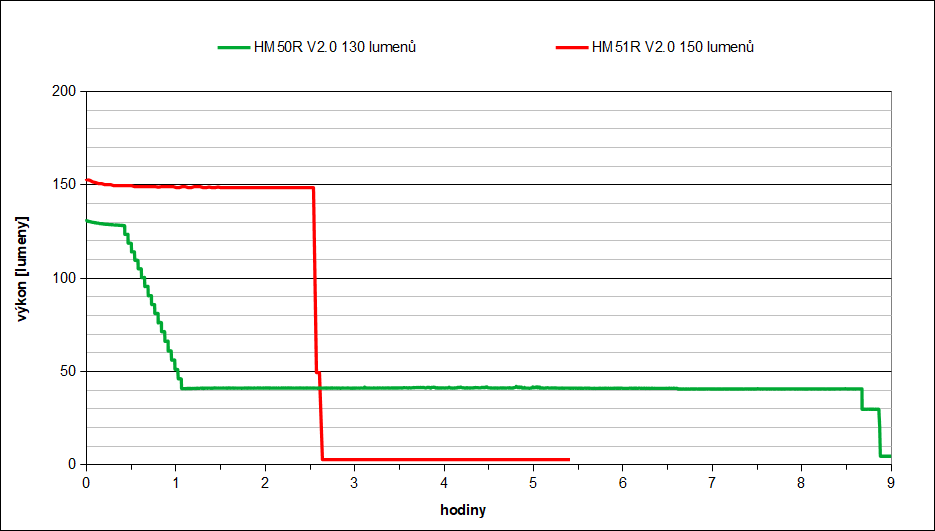Lighting parameters - what to follow when choosing
5.1.2024
Despite the fact that the parameters of Fenix flashlights and headlamps are measured according to a uniform procedure, sometimes you don't know what to make of the results. In the following lines we will try to clarify the issue.
Since 2010, Fenixlight has been specifying parameters in accordance with the American ANSI / NEMA FL 1-2009 standard for all new models. This clarifies customer information and makes it easier to navigate through the offer of various manufacturers who also list flashlight parameters according to the ANSI / NEMA FL 1 standard. Fenix is one of the first non-US LED flashlight manufacturers that has decided to voluntarily comply with this standard. Other manufacturers using this standard include Streamlight, Maglite, Surefire, Energizer, Duracell, Black Diamond, Princeton and others.
The ANSI/NEMA FL 1 standard measures the following parameters:
- Lumen output (lumens)
- Light cone intensity (candela) and throw
- Duration of battery runtime
- Shock resistance
- Water resistance
Measurement conditions
Flashlights and headlamps are measured in the laboratory with fully charged batteries in an environment with an air temperature of +21°C (±3°C) and a humidity of 50-80%.
Laboratory vs. reality
But what happens, does anything change if we take the flashlight out of the lab into daylight, er, I mean nighttime darkness?
The lamp's resistance to mechanical damage
Here it should probably be clear. Impact resistance indicates the minimum drop height on a hard surface (such as concrete) that will not damage the flashlight. The body of the torch must not show any cracks and must be fully functional. The minimum drop height for the test is 1 metre.
However, there may be situations where the flashlight may be damaged by a fall of 1 metre. For example, dropping the reflector glass directly onto a sharp stone. If such a mishap happens, we will not let you down and will usually repair the flashlight free of charge.
Water resistance is measured according to another standard and its range is given according to the so-called IP. The designation is then IPXY, where X indicates resistance to the size of solid particles that can get into the flashlight (dust) and Y indicates resistance to water. For Fenix products, these are usually splashing water (rain) of different intensities (e.g. IP66) or pressurised water (submersion below the surface) of different maximum depths and residence times (e.g. IP67, IP68).
Why does a flashlight with a lower lumen output reach farther than stronger flashlights?
Range is stated as the distance over which the intensity of the output of the flashlight drops to 0.25 lux. This is approximately the intensity produced by the full moon under clear skies. The value is read between 30 and 120 seconds after switching on the flashlight.
The distance over which this drop to this value occurs varies not only according to the light output of the flashlight (total amount of light), but mainly according to the shape and size of the reflector that shapes the light (where and how much light it sends) and the LED used. In general, a larger reflector produces a better focused lightbeam with a longer range.
Typically, for example, tactical and hunting flashlights have a narrow center of the lightbeam due to their purpose, and this narrower beam will reach farther than the light of civilian and EDC flashlights with a larger beam angle albeit of equal or even higher power.
In candelas (cd, candela), the intensity of the light cone is then given, which is measured with a calibrated luxmeter at 2, 10 and 30 metres at its most intense part (usually the centre). The higher the candelas, the better the range.
And the best part at the end
Probably the biggest confusion is encountered when comparing the battery life of different lighting modes.
'Does the flashlight really last the time indicated by the maximum light output in turbo mode?'
'How is it possible that headlamps with the same battery light for a different length of time in medium mode?'
'The headlamp is guaranteed to last 4 hours at 200 lumens, but it only lasted 3 hours on the cross-country trails. Why?'
These are some of the questions you often ask yourself. It's quite a big issue, but we'll try to summarise it as briefly as possible.
First of all, it should be understood that the runtime claimed for flashlights is not guaranteed, but measured in laboratory testing. The battery life is given as the time until the light output drops to 10% of the initial value measured 30 seconds after switching on. Practical use, switching, multiple on and off switches, different environments (especially temperature and humidity) can all affect battery life differently than measured by the ANSI/NEMA FL 1 standard.
We would also like to point out that turbo/burst modes are not usually designed for constant illumination. They should be used, for example, to look around in difficult terrain or to illuminate a path for short periods of time for orientation. When moving in the terrain, modes up to 50 lumens are normally sufficient for walking, modes up to 200 lumens for running and higher outputs of 400-1200 lumens or more are then usually needed depending on the speed and difficulty of the terrain (MTB, skialps, downhill cross-country skiing). All of course also depending on the physical state of vision of the particular user.
When lighting at high power levels, the LEDs heat up, which leads to a reduction in power to avoid burning the user or damaging the lamp (overheating protection is activated). Ambient temperature and humidity also affect the onset of overheating protection.
Some flashlights are programmed to hold maximum power output and reducing the power only causes the aforementioned overheating and battery state of charge. Other flashlights are programmed to conserve battery power and gradually or stepwise reduce power in each mode, even if overheating does not occur and the battery is sufficiently charged.
So how do I know it? How long will my flashlight really stay on?
In the higher modes, the power is reduced during lighting to prevent overheating. If the power is regulated by the electronics to save battery power, power reduction can occur in lower modes regardless of temperature. Depending on how it is set by the manufacturer. To help you estimate the lighting characteristics of each model, we have included a chart with the power and endurance measurements. Please take these measurements into account when choosing the right product for your needs. See example graphs of similar headlamps below.


The electronics in the Fenix HM50R V2.0 and HM51R V2.0 headlamps are programmed differently to conserve battery power.
The graphs show a different pattern of power reduction and different battery life in high (400 lm) and medium (130 lm and 150 lm respectively) modes.
If you are unsure of your choice, the easiest thing to do is to contact us. We will be happy to advise you on email questions and last but not least, we will also be happy to welcome you in our brick-and-mortar store.